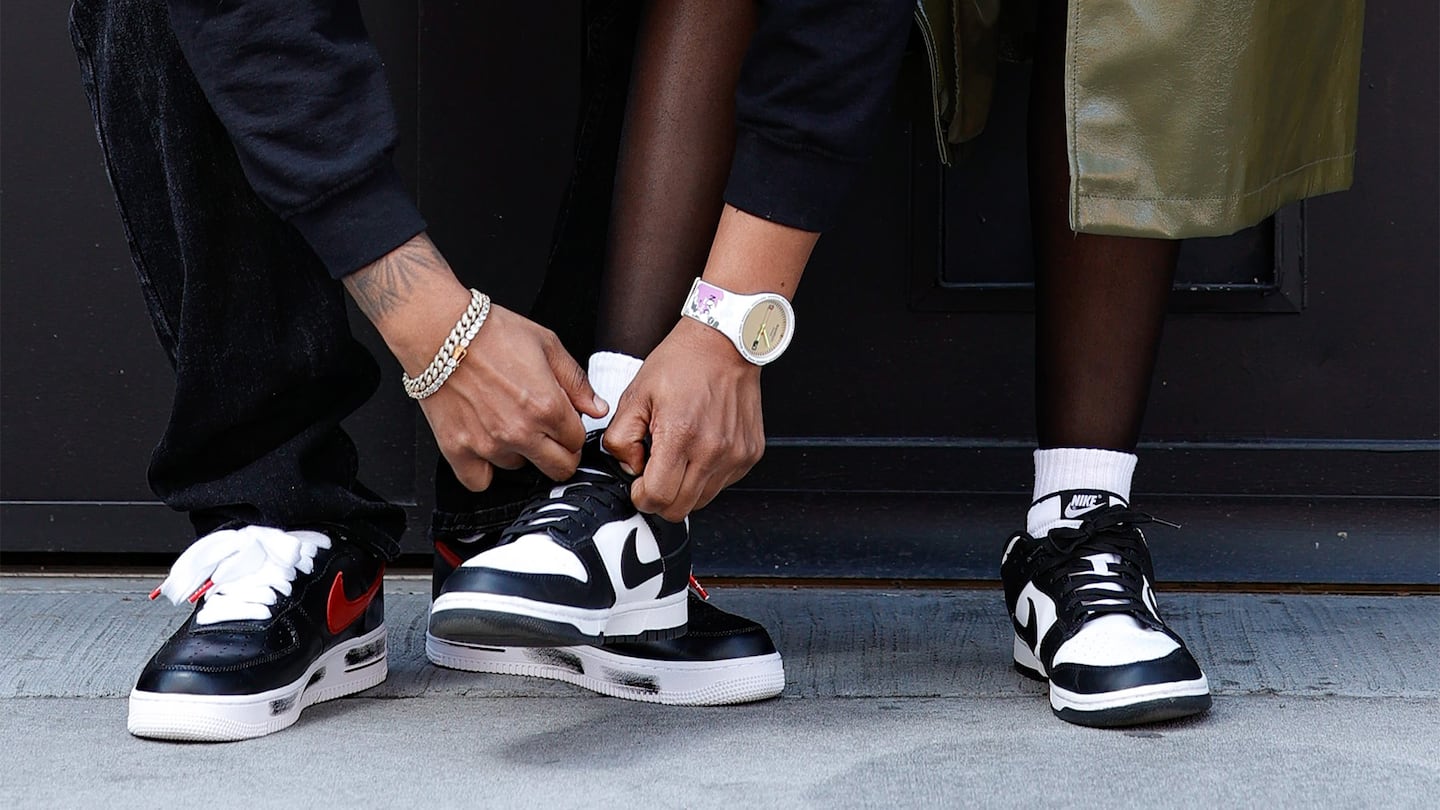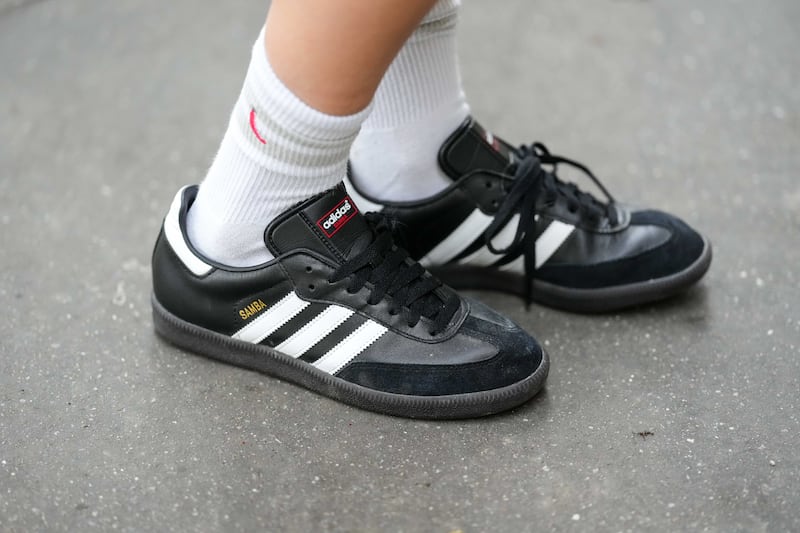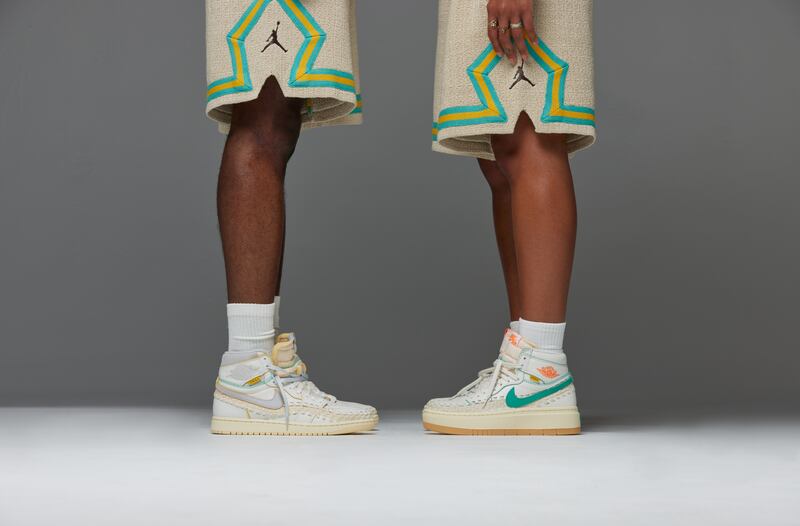
The Business of Fashion
Agenda-setting intelligence, analysis and advice for the global fashion community.

Agenda-setting intelligence, analysis and advice for the global fashion community.

Shopping for sneakers today can feel like stepping back in time.
Nike’s hottest shoes include the Air Force 1, Dunks and early Jordans — particularly the 1, 3 and 4, all models that first appeared in the 1980s. At New Balance, the 574 (released in 1988) and 550 (1989) are trending. Adidas’ current winners are even older, including Gazelles (1968) and Sambas (1950).
Over on StockX, of the 50 best-selling styles in 2023, only three are less than five years old, according to Drew Haines, the company’s merchandising director of sneakers and collectibles.
Fashion is an industry obsessed with the next big thing, yet for years now the sneaker market has been dominated by decades-old shoes. It’s not always the same retros that are selling — Adidas’ Superstars were hot in 2016, while Sambas reign today — and brands keep introducing small design updates, new colourways and collaborations to push their classics. There are exceptions, too, such as Yeezys, and before them, Nike’s Air Max 270 and Adidas’ NMD. But by and large, retros rule.
ADVERTISEMENT
“That’s what’s been driving our market,” said Chris Gibbs, owner of the influential sneaker and streetwear retailer Union Los Angeles. “That’s what’s relevant. That’s for the most part all I personally wear, for better or worse.”
Gibbs and other experts BoF spoke with offered up factors like nostalgia, the cyclical nature of fashion, the rise of hip-hop, businesses embracing risk-averse strategies and a broader culture hooked on recycling intellectual property, from Barbie to Marvel, to explain the phenomenon.
For the giants with a rich archive to mine, it’s been lucrative. Nike doubled its sales to $51.2 billion over the last decade. Adidas increased sales more than 50 percent to €22.5 billion ($24.3 billion) between 2012 and 2022.
Retros aren’t going away, but the market may also be ready for some newness. These days, smaller competitors such as Hoka and On are finding success with designs incumbents are now imitating. In May, Sam Poser, an analyst at Williams Trading, issued a “sell” call on Nike stock, describing its Air Max franchise as “almost dead.”
“The problem happens when nothing new is coming and they keep counting on the same thing for too long, and then it gets old, it gets stale, it gets marked down,” he told BoF.
Nike itself seems eager to pick up the pace on innovation. On the company’s earnings call in June, chief financial officer Matt Friend said the company would keep increasing investments to that end.
“I think people have a much bigger appetite for new things in the last year,” Gibbs said.

The current retro cycle has persisted for at least 10 years, according to Matt Powell, a veteran sneaker analyst who is now an advisor with his consultancy, Spurwink River, and BCE Consulting. The pandemic entrenched it further. With supply chain disruptions limiting manufacturing capacity, businesses played it safe. All across retail, the share of new products on the market declined.
ADVERTISEMENT
“They said, ‘What are our top sellers? Make a lot of those and don’t take any risks on anything new and innovative because we have limited production,’” Powell said. “Really, every brand was guilty of this.”
Beyond supply-chain issues, Powell also linked the trend to pop culture’s wider fixation on rehashing old ideas, citing the Barbie and Tetris movies as well as TV-show reboots. For the entertainment industry, the strategy has paid off. The highest-grossing movies of the past decade have largely been sequels and remakes based on ideas first dreamed up years ago.
“They’re a victim of their own success,” Gibbs agreed, offering Star Wars as an example. “I would argue the sneaker market is that too.”
Refreshing the past doesn’t guarantee sales, but it’s often less risky than trying something entirely new. Sneakers — and streetwear — made piles of money by pushing what Gibbs called “the canon,” including retro basketball shoes and items like logo hoodies.
Many of these items were central to the aesthetic codes hip-hop created as it grew from a niche music genre born 50 years ago at a party in the Bronx to the most popular in the US and consumed globally. Along the way hip-hop blended with surf and skate culture, which embraced Dunks and other retros, to form the foundations of streetwear, a style that has itself reshaped fashion.
Certain heritage products became iconic, and for brands and retailers, the safe bet. It’s telling that Nike’s collaborations with Dior, Louis Vuitton and Tiffany have centred on the Jordan 1 and Air Force 1, while Gucci and Adidas have teamed on Gazelles.
A push from brands is only half the equation; somebody has to want their stuff.
“I do think there’s consumer demand for it,” said W. David Marx, author of the book “Status and Culture,” which argues that the pursuit of status drives cultural trends.
ADVERTISEMENT
One of the final sections of Marx’s book deals with the internet age and the “retromania” identified by authors such as Simon Reynolds. In this view, the unprecedented access to products and information today, particularly following the spread of the internet, disrupted the established trend cycle and made it harder for contemporary inventions to develop the same cultural significance and cachet.
“There’s just too much new stuff, and because there’s so much, nothing takes on really clear meanings,” Marx said.
Historical value becomes more important for communicating identity, pushing consumers toward retro styles with strong cultural associations. The theory may help to explain Gen-Z’s love of 1990s and Y2K clothing, or the present popularity of the archetypal Dr. Martens boots and Birkenstock sandals.
It is possible for new designs to catch on; it’s just harder for them to develop the same status value. New styles can also be riskier to wear, because they might be seen as a fad. Yeezys were at least able to piggyback on the status of Kanye West (now Ye).
Faced with endless options, many shoppers, like sneaker companies, will go the conservative route and opt for retros, which tend to be simple designs that are easy to wear. Brands’ sneaker innovations, meanwhile, often focus on athletic performance, where they’ve historically tried to differentiate themselves. But the average consumer today is more likely to wear sneakers to run an errand than a marathon.
Shoppers won’t necessarily buy the same vintage styles and wear them exactly as their parents — or grandparents — did. Brands stoke demand by manipulating supply while putting out new colourways, collaborating with young designers and tweaking details to put new spins on old standbys. New Balance continues issuing updated versions of the 990 sneaker it first debuted in 1982. Union’s recent collaboration with Nike and Bephe’s Beauty Supply took the Jordan 1 into uncharted territory by adding in the woven detailing of the Air Footscape.

Consumers, meanwhile, have their own ways of reviving the classics. Young shoppers, for example, are customising their Sambas by swapping laces for ribbons, said Willa Bennett, editor-in-chief of Highsnobiety.
“It’s this really interesting tension of them wanting to go back to the classics … things that previous generations have championed, but then also making it their own and taking it into this new zeitgeist,” Bennett said.
For the foreseeable future, brands will keep cycling through their archives, increasing and decreasing volumes of their heritage styles to continually refresh demand as different models go in and out of fashion, the way running and trail shoes are gaining heat as basketball silhouettes cool. At the same time, they’ll keep releasing novel designs in the hopes they’ll attract shoppers — and maybe become future classics themselves.
There are at least some customers seeking new styles. Market research firm Circana has seen the percentage of footwear sales from new items increasing in the past six months, according to Beth Goldstein, its footwear industry analyst. She cautioned that it’s a small uptick in a soft market — far from a revolution — but the desire is there.
Brands like Asics, Hoka and Salomon have by some measures elbowed out basketball shoes as the secondhand market’s hottest sneakers.
The instant access to information and products provided by the internet is changing how we adopt trends and signal status, argues author W. David Marx in “Status and Culture,” leaving us worse off for it.
Brands, retailers and investors are betting on trail running, the fast-growing endurance sport, to become activewear’s next big category.

Marc Bain is Technology Correspondent at The Business of Fashion. He is based in New York and drives BoF’s coverage of technology and innovation, from start-ups to Big Tech.
Designer brands including Gucci and Anya Hindmarch have been left millions of pounds out of pocket and some customers will not get refunds after the online fashion site collapsed owing more than £210m last month.
Antitrust enforcers said Tapestry’s acquisition of Capri would raise prices on handbags and accessories in the affordable luxury sector, harming consumers.
As a push to maximise sales of its popular Samba model starts to weigh on its desirability, the German sportswear giant is betting on other retro sneaker styles to tap surging demand for the 1980s ‘Terrace’ look. But fashion cycles come and go, cautions Andrea Felsted.
The rental platform saw its stock soar last week after predicting it would hit a key profitability metric this year. A new marketing push and more robust inventory are the key to unlocking elusive growth, CEO Jenn Hyman tells BoF.